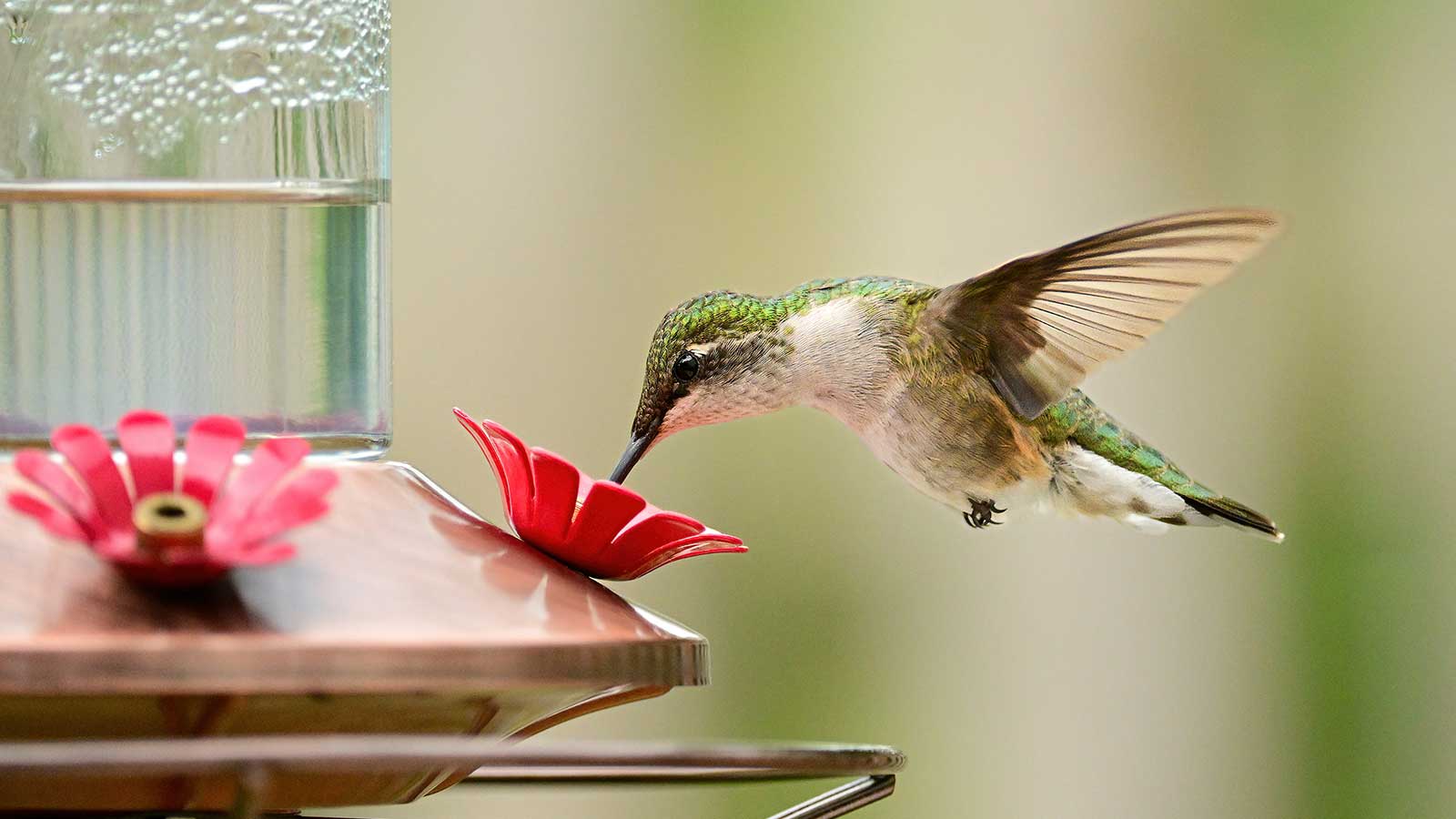
Watching hummingbirds in your own backyard is a wonderful pastime. These tiny, jewel-colored creatures zip around the skies like elegant acrobats, dipping and diving at high speeds. Offering a food source is one of the best ways to encourage their visits, but if you're using a feeder, keeping it mold-free is important.
Rather than seeds and nuts loved by other wild birds, hummingbirds like to feast on nectar. While planting certain flowers can attract them, you can also make your own hummingbird food to fill up a special hummingbird feeder.
Put it out at the right time of year in the right place, and, with a bit of luck, your feathered friends will soon come flocking. But this sugary mixture, combined with warm temperatures, can soon lead to mold growth. We have spoken to wildlife experts to find out exactly what to do if you see anything suspect, and how to prevent it in future.
How to clean black mold off a hummingbird feeder
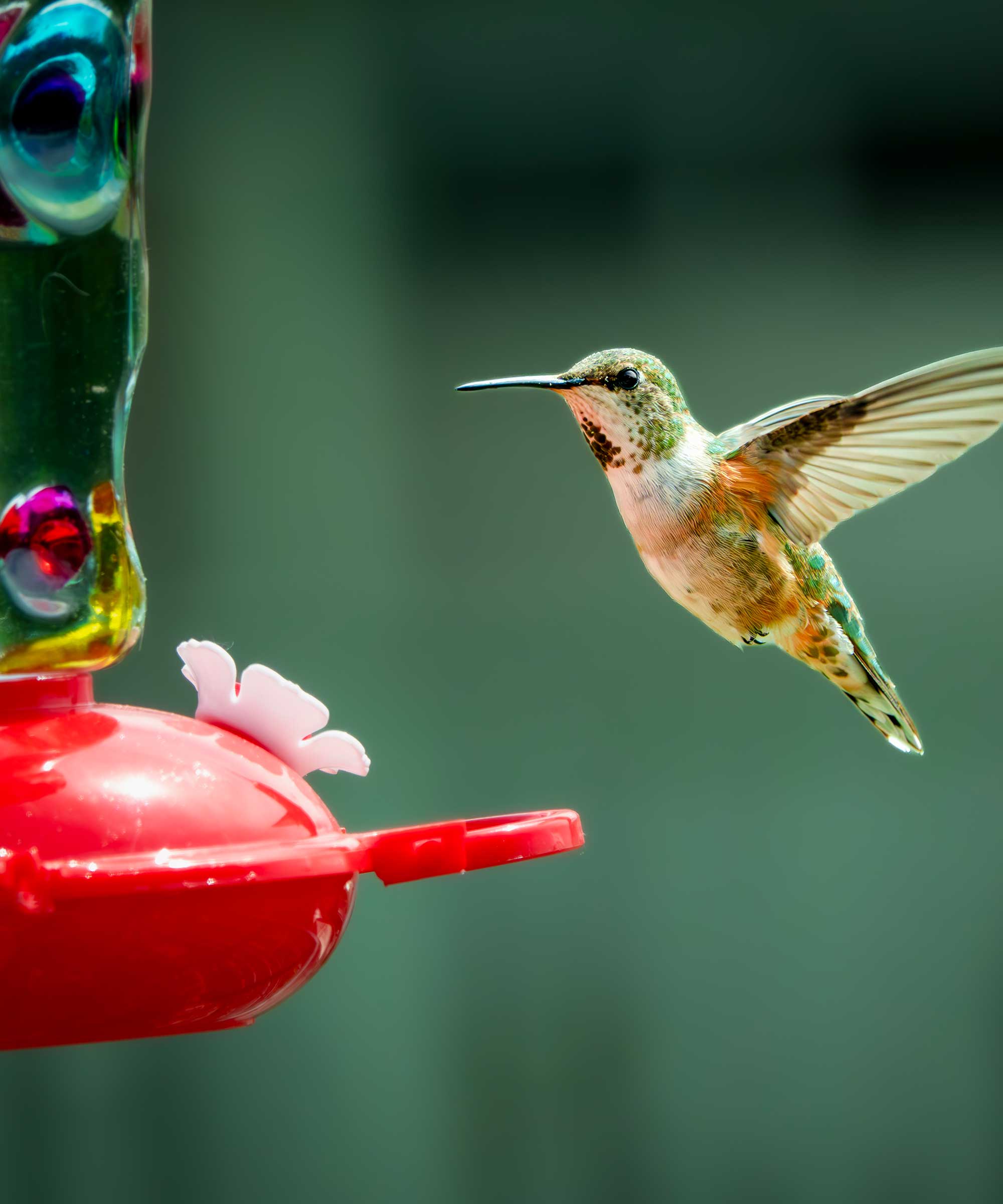
If you've seen something suspect, the best thing to do is take your feeder down straight away and give it a good clean. As Ben Team, wildlife expert of FootstepsInTheForest.com, points out, mold can cause health concerns for the birds or trigger them to stop visiting the feeder. An example of the former is candidiasis, a potentially fatal infection that makes their tongues swell, preventing them from eating.
Cleaning a hummingbird feeder is really quite straightforward, and doesn't require anything fancy. In fact, both Ben and Yaron Lief, the president of mold-remediation experts Orange Restoration San Diego, recommend using water and vinegar.
'Start by emptying the feeder completely,' says Yaron. 'Rinse it with hot water, then soak it in a mixture of one part white vinegar to four parts water.' He then recommends scrubbing all the surfaces thoroughly, with the help of a bottle brush or a pipe cleaner. 'Pay special attention to small crevices and feeding ports,' he says.
Once your feeder is clean, give it a good rinse. You'll want to ensure you can no longer detect the odor of vinegar, Ben advises. You can then refill it with fresh food and pop it back outside.
'Avoid using soap or bleach unless necessary,' adds Yaron. 'If you do, rinse thoroughly to make sure no residue is left behind.'
Charlie Leduc of Axxonlab, another pro at tackling mold, says that all mold, regardless of species, is allergenic and carries potential exposure risk to all organisms. He advises wearing disposable nitrile gloves when cleaning surface mold of any kind. 'Mold can be a dermal irritant, especially for those with compromised immune systems, or allergies to mold and shellfish.'
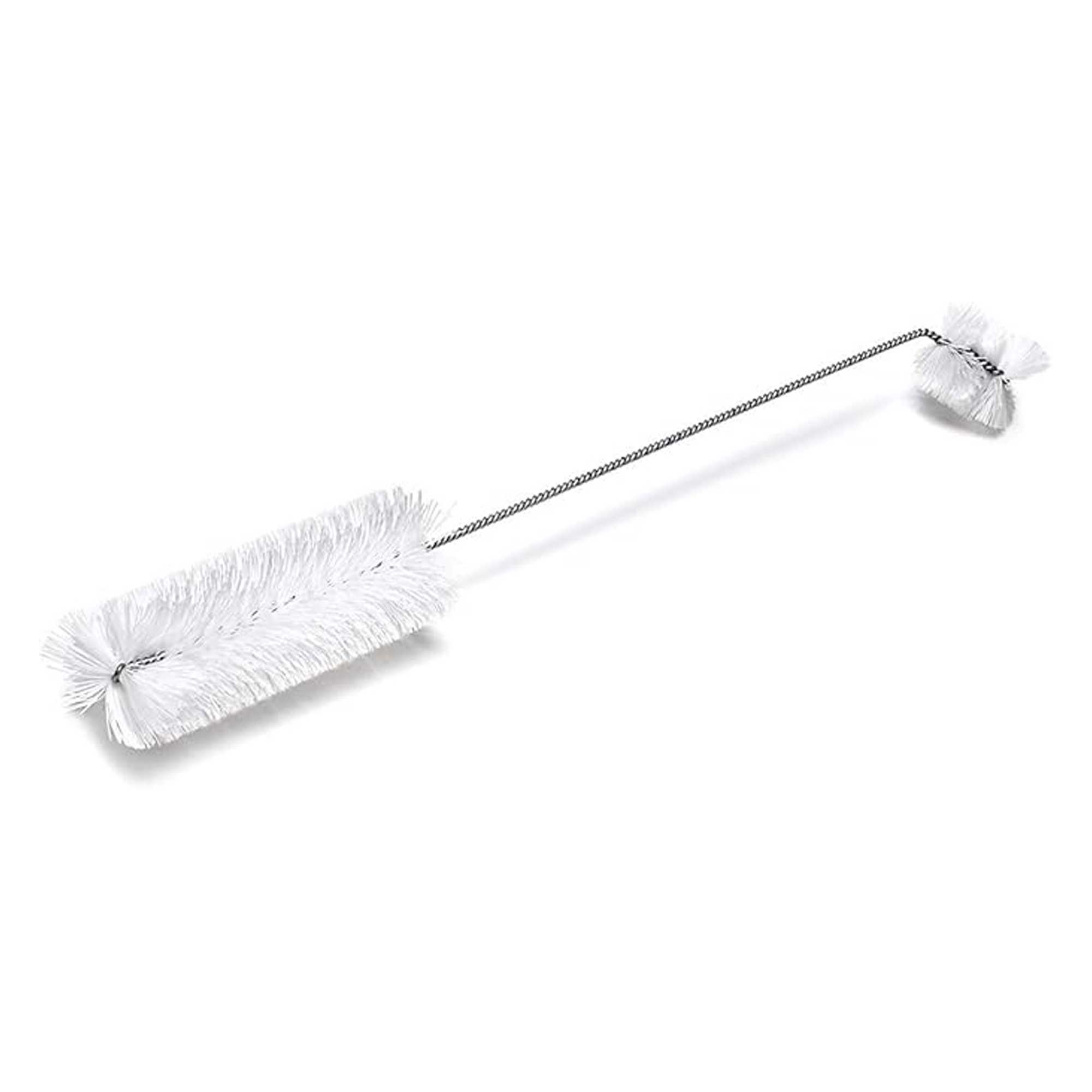
Scrub your hummingbird feeder with ease using this dual-headed, rust-resistant brush.
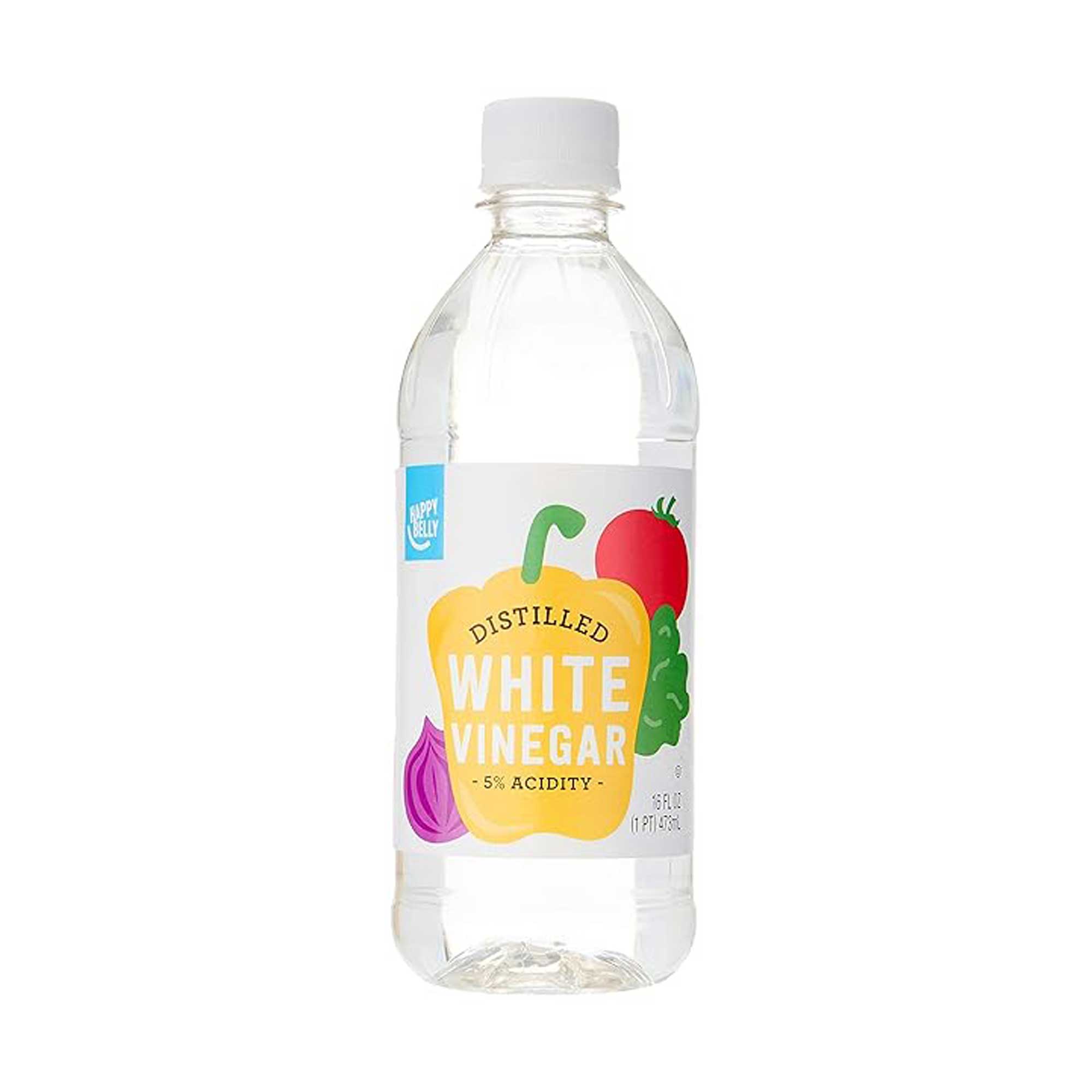
Not just for cleaning hummingbird feeders – white vinegar is a household staple for many tasks. And this one's under $1.
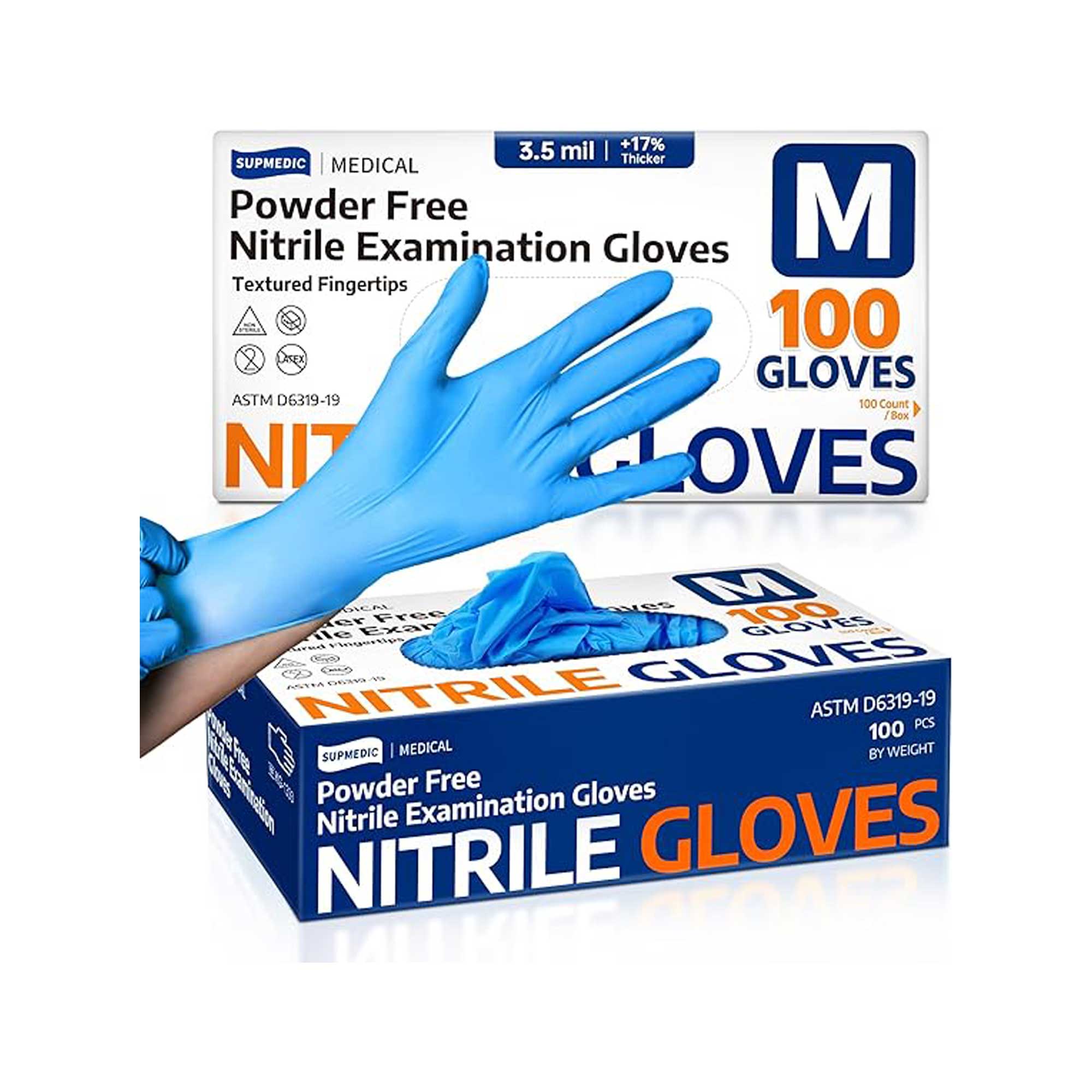
Protect your hands when cleaning with these durable nitrile gloves which include a textured grip.
How to prevent it from happening again
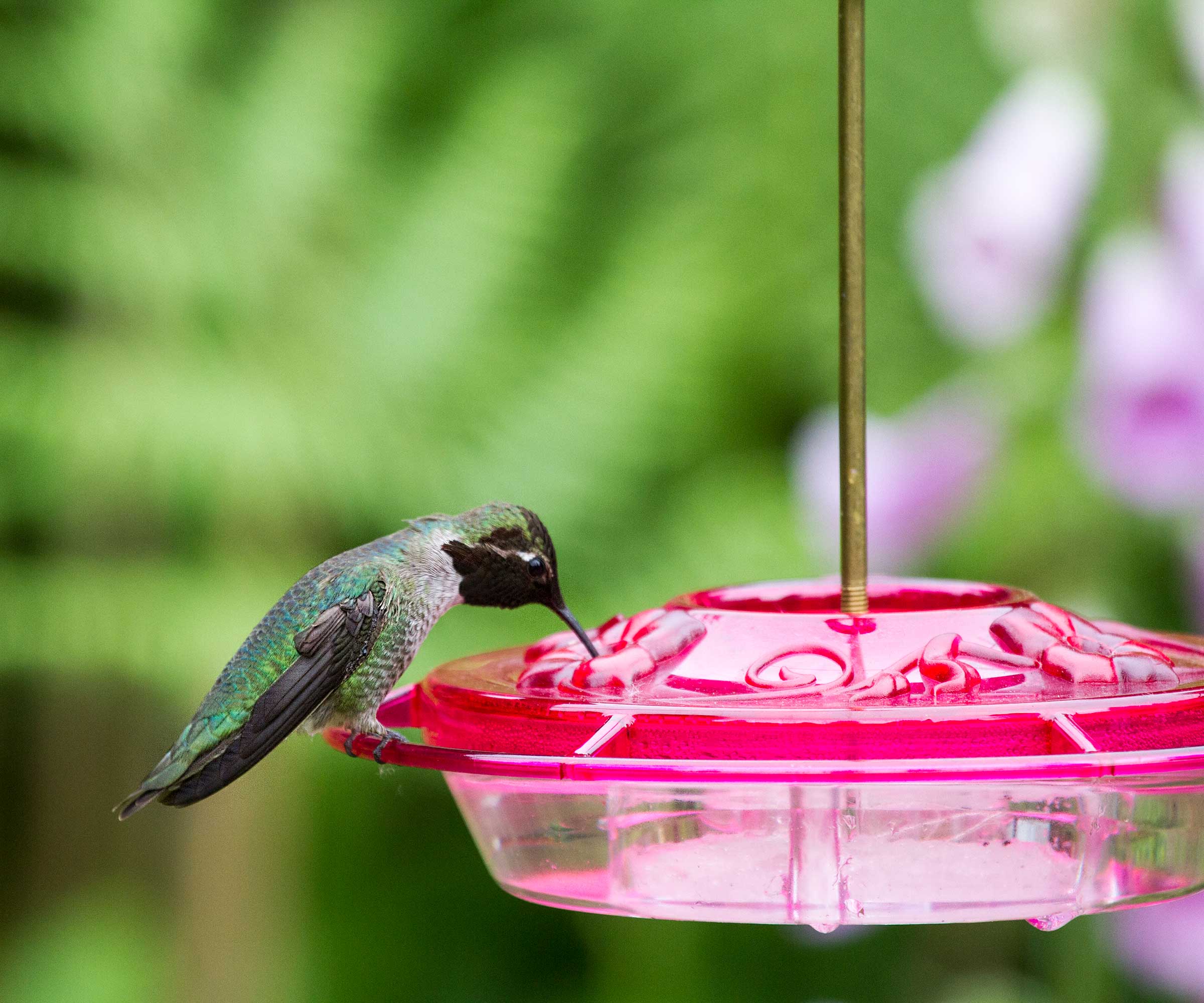
'To avoid mold developing in the future, be sure to empty, clean, and refill your hummingbird feeder regularly – at least once per week in cool weather and every few days when the temperatures are high,' says Ben.
Yaron also recommends keeping the feeder in a shaded area to slow down fermentation, and to always use the proper nectar ratio. 'Avoid adding dyes, honey, or anything else, as those can speed up mold growth,' he adds.
FAQs
Are some hummingbird feeders easier to clean than others?
Buying a complicated design that's fiddly to clean is a hummingbird feeder mistake you'll quickly come to realize. Instead, look for something simpler, such as The Sweet Spot™ hummingbird feeder from Jacobi Jayne® at Amazon, which comes with its own cleaning brush, or Nature's Way's mason jar design.
I don't have time to regularly clean my feeder – how else can I attract hummingbirds?
It's true, using a hummingbird feeder responsibly means cleaning and refilling it often – and not everyone has the time to do so. Rather than risk harming these winged wonders, look to other ways to attract hummingbirds to your yard. Certain native spring flowers, types of trees, and even the color red can all help.
Are you looking for more troubleshooting advice on hummingbird feeders? If you need to know how to keep ants out of your feeder or even bees, we've rounded up practical tips to help. And if you're thinking of buying a hummingbird house to support these visitors even further, you'll definitely want to reconsider after reading our guide.







